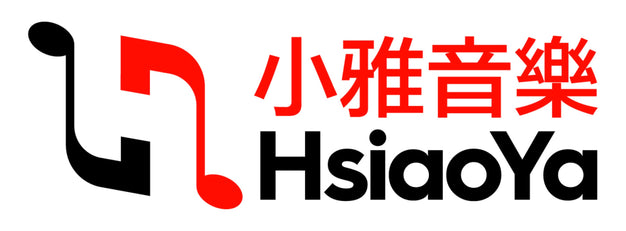
Nocturne for violin and orchestra completed and orchestrated after the sketches of Debussy by Robert Orledge 夜曲小提琴管弦樂團 管弦樂團 小提琴加鋼琴 朔特版
比利時小提琴家尤金-伊薩耶(Eugène Ysaÿe,1858-1931 年)精湛的技藝與詩意的融合令人印象深刻,他是年輕的德彪西音樂的忠實崇拜者,1893 年 12 月,德彪西唯一的絃樂四重奏在巴黎首演。1892 年 9 月,在安德列-波尼亞托夫斯基王子的資助下,德彪西計畫進行一次美國巡演,其中包括他即將完成的三首《搖籃曲》(Scènes au crépuscule),靈感來自他的朋友亨利-德-雷格尼耶(Henri de Régnier)的象徵主義詩歌。1893 年,他對這三首曲子進行了大量修改,但流傳下來的似乎只有法國國家圖書館 MS 20632(2)中的一系列草圖,其中大部分似乎是為小提琴和管弦樂隊創作的 E 大調或 B 大調作品。我們還從歐尼斯特-肖松(Ernest Chausson)1893 年 4 月的信中得知,德彪西正在為伊薩耶斯 1894-95 年的首次美國巡演創作一部作品,這部作品曾一度被描述為協奏曲。1894 年,當德彪西為《牧神午後》做最後潤色時,他告訴伊薩耶,他正在為小提琴獨奏和管弦樂隊創作三首夜曲,這三首夜曲是為您準備的,無疑源自他之前創作的《暮色》場景。第一首僅為弦樂而作;第二首為三支長笛、四支圓號、三支小號和兩把豎琴而作;第三首將所有這些樂器結合在一起。他還告訴伊薩耶,也許是考慮到惠斯特勒斯的《夜曲》,這些樂曲要像繪畫中的灰色研究。德彪西直到 1896 年 11 月才放棄這一計畫,因為伊薩耶告訴他,由於經濟原因,他無法在布魯塞爾首演《夜曲》。我完成的作品最接近德彪西計畫中的第三首《夜曲》,也是一首帶有相關情節的迴旋曲。2006 年出現的動態構思由德彪西譜寫,自然而然地引出 B 大調黃昏主題,由大提琴和低音提琴獨奏開始,一開始聽到的高亢、縈繞的三音構思在小提琴獨奏中浮現,與德彪西的構思如出一轍。德彪西的五個主題都是和聲,長度在三小節到十三小節之間:它們都與 1897-99 年的管弦樂夜曲無關。整部作品沒有發展任何一個主題,而是以《牧神午後》(LAprès-midi dun faune)的現代方式,在不斷變化的和聲背景中呈現出來
作曲家: Debussy, Claude / Orledge, Robert
校訂者: Orledge, Robert
樂器: violin and orchestra
出版社: Schott Music
原文簡介:
The Belgian violinist, Eugène Ysaÿe (1858-1931), with his impressive blend of virtuosity and poetry, was a great admirer of the young Debussys music who led the Paris première of his only string quartet in December 1893. In September 1892, Debussy was planning an American tour with the financial support of Prince André Poniatowski that was to include his nearly completed three Scènes au crépuscule, inspired by the Symbolist poetry of his friend Henri de Régnier. He made extensive revisions to them in 1893, even if all that seems to have survived is a series of sketches in Bibliothèque Nationale de France, MS 20632(2), most of which appear to be for violin and orchestra in E or B major. Another related, and more virtuosic, theme emerged in a Parisian sale in June 2006, which opens the main part of the present Nocturne (after a slow introduction).We also learn from Ernest Chausson in April 1893 that Debussy was composing a work for Ysaÿes first American tour in 1894-95, which at one stage was described as a concerto. Then, as Debussy was putting the finishing touches to LAprès-midi dun faune in 1894, he told Ysaÿe he was now working on three Nocturnes for solo violin and orchestra which are destined for you, and which undoubtedly derived from his earlier Twilight scenes. The first was to be for strings only; the second for three flutes, four horns, three trumpets and two harps; the third combines all these instruments. He also informed Ysaÿe, perhaps with Whistlers Nocturnes in mind, that they were to be like a study in grey in painting. Debussy only abandoned this project in November 1896 after Ysaÿe told him he would not be able to première the Nocturnes in Brussels for financial reasons.My completion comes closest to the third Nocturne Debussy planned and to being a rondo with related episodes. The dynamic idea that emerged in 2006, which was scored by Debussy, leads naturally into the twilight theme in B major beginning on solo cello and doublebasses, with the high, haunting three-note idea first heard at the outset floating above on solo violin, exactly as Debussy conceived it. All five of Debussys themes are harmonized and they vary in length between three and thirteen bars: none of them relate to the orchestral Nocturnes of 1897-99. Rather than develop any of these themes, they are presented in changing harmonic backgrounds in the contemporary manner of LAprès-midi dun faune, and the whole work centres on an expansive scalar which joins the various aspects of Debussys twilight themes together in a new perspective.








